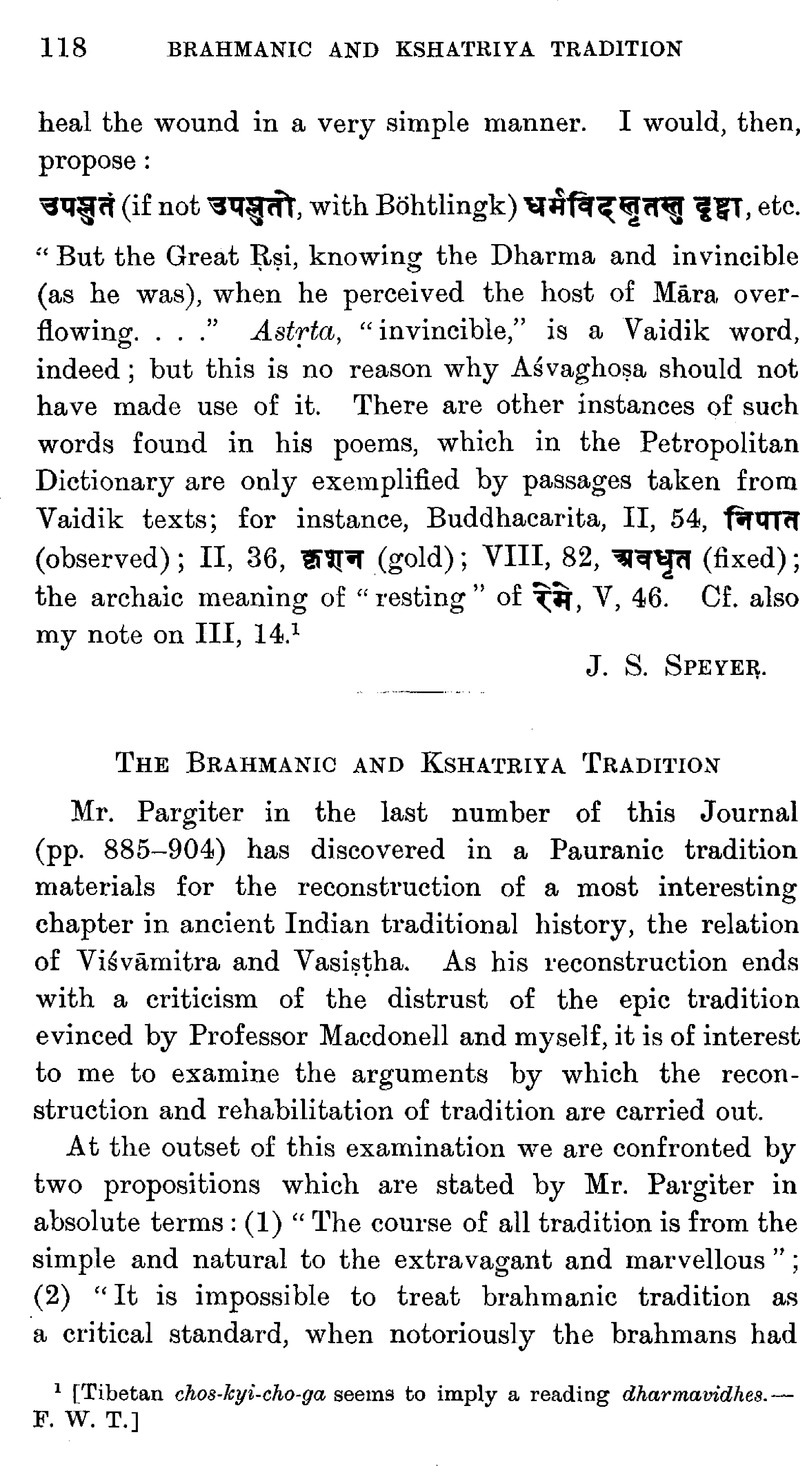No CrossRef data available.
Published online by Cambridge University Press: 15 March 2011

page 120 note 1 p. 889.
page 120 note 2 p. 902.
page 120 note 3 See JRAS. 1907, p. 681.Google Scholar
page 121 note 1 See e.g. the various versions of the Ṛṣyaśṛṅga episode analysed by Lüders, and those of the Purūravas and other legends examined by Geldner and Sieg. Cf. also JRAS. 1911, p. 1105.Google Scholar
page 122 note 1 Mr. Pargiter's further identification of devarāj and divaukas (they are “nearly equivalent”, p. 897Google Scholar, n. 2) leads him into the unhappy conjecture of divaukasam = Vasiṣṭha in the place of the picturesque touch by which Satyavrata's interference with the marriage is called an assault on the gods, a touch in full harmony with the religious ceremony of marriage and far from absurd or impossible (p. 894, n. 1).
page 123 note 1 p. 903.
page 123 note 2 pp. 895, 900, n. 1.
page 123 note 3 See Macdonell, , Vedic Mythology, p. 150.Google Scholar
page 124 note 1 p. 887.
page 125 note 1 p. 893, n. 10.
page 126 note 1 p. 904.